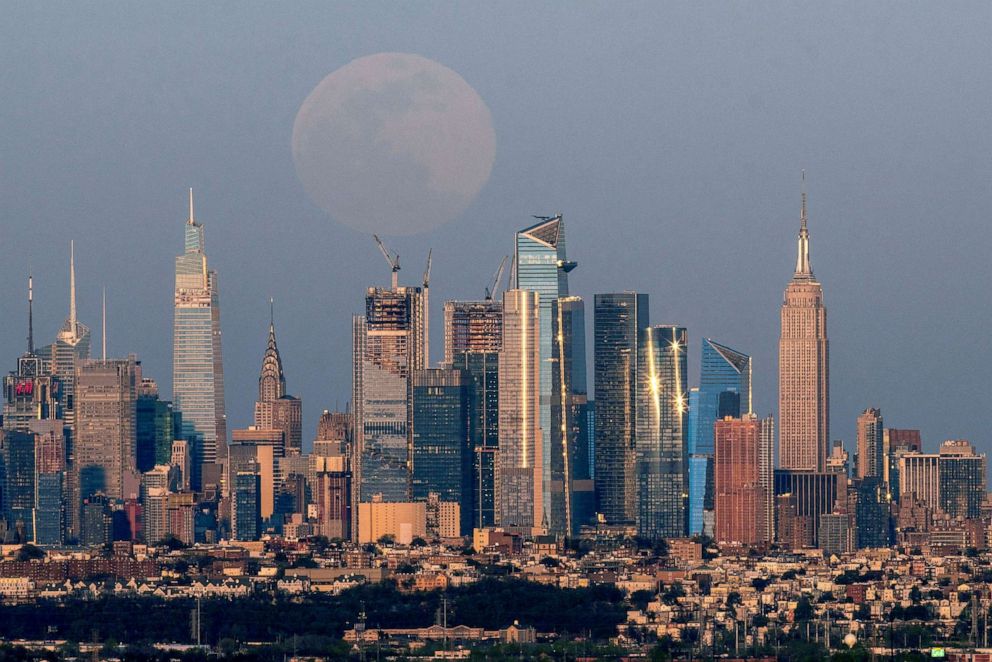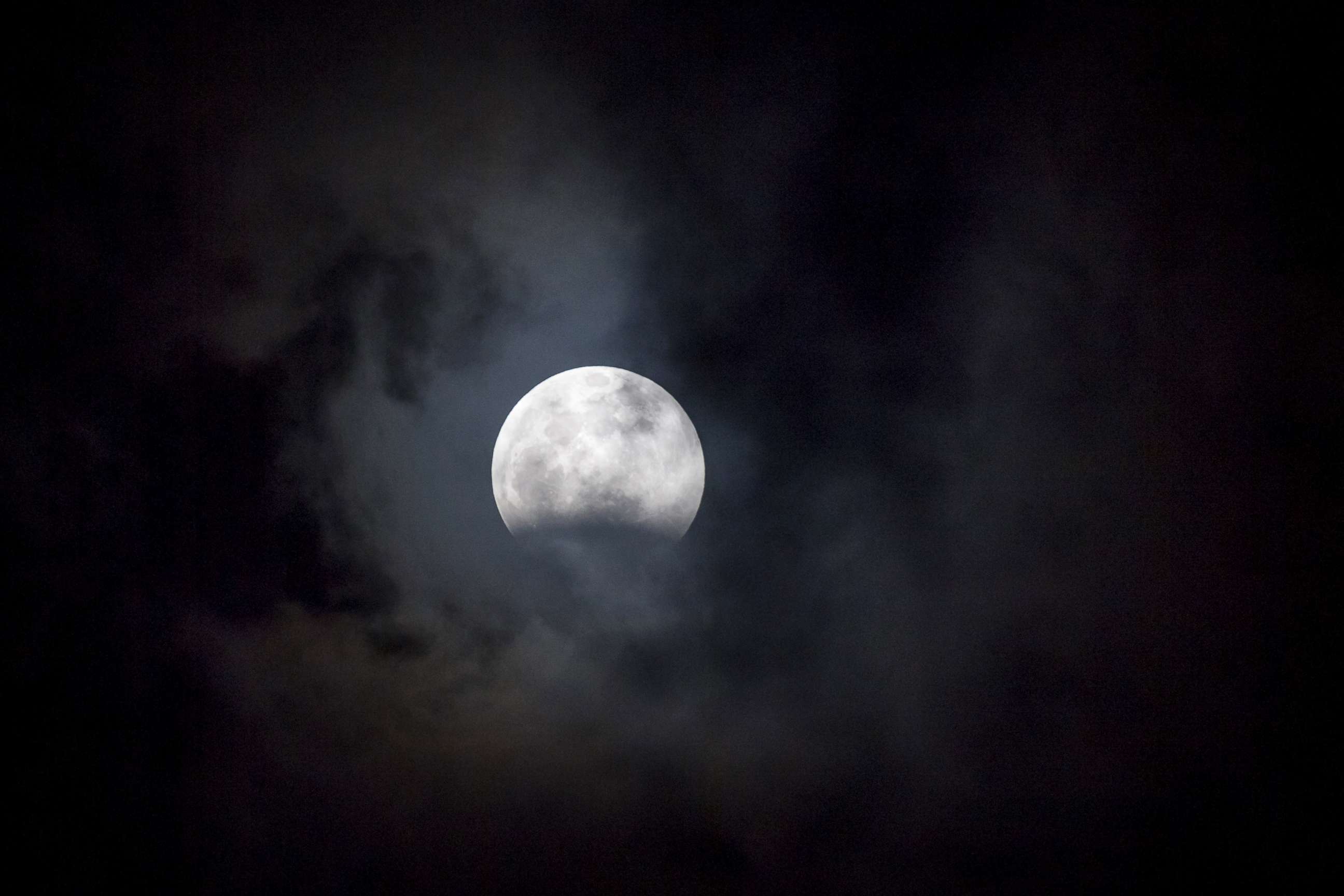How to see the 'Super Flower Blood Moon,' 1st lunar eclipse of this decade
The event will be most visible on the West Coast on Wednesday.
In a once in a lifetime event, the night sky on Wednesday will be both the brightest and darkest ever seen.
This week's full moon will be the second supermoon of the season, appearing brighter and larger than usual. According to the Farmer's Almanac, the "Flower Blood Moon" will be roughly 222,000 miles away from the Earth early Wednesday morning.
May's full moon is known as the "Flower Moon," and because a total lunar eclipse -- also known as a "blood moon" as it gives the moon a reddish hue -- is also set to happen at the same time, it's being called the "Super Flower Blood Moon."
The moon will be at its brightest and largest at 4:14 a.m. PT, according to astronomers.

With the moon this close to the planet, stargazers in certain parts of the world will get to see an impressive sight.
People who live in western North America, western South America, eastern Asia, and Oceania, will have the best view of the "Flower Blood Moon," according to astronomers.
"In the U.S., those who are located east of the Mississippi will experience a partial lunar eclipse before the moon sets below the horizon, and those along the East Coast won’t see much of anything, unfortunately," the Farmer's Almanac said.

This will mark the first lunar eclipse of the decade. The last one was recorded on Jan. 21, 2019.
A partial lunar eclipse is also scheduled for Nov. 19, according to astronomers.




